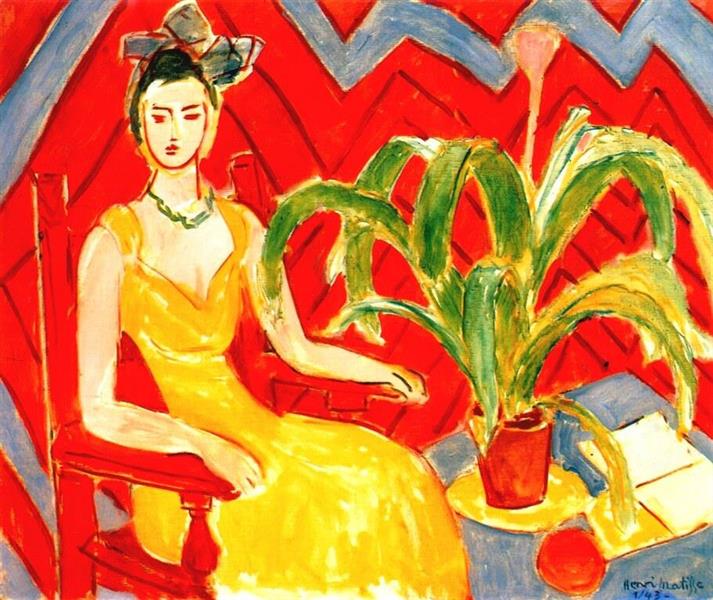Description
Henri Matisse, a master of color and form, left an indelible mark on the history of modern art. His work "Michaela" from 1943 is no exception. This painting not only reflects the artist's technical skill but also his ability to infuse his works with vibrant energy and contemplative serenity simultaneously.
"Michaela," with its dimensions of 72x60 cm, presents us with an intimate composition that highlights Matisse's fascination with the human figure and its surroundings. The work portrays a young woman, Michaela, whose face is characterized by defined but soft strokes, capturing an expression of thoughtful tranquility. She is dressed in an intense red garment that wonderfully contrasts with the light background, creating a visual balance that is characteristic of Matisse's style.
The use of color in "Michaela" is emblematic of Matisse's mastery over color theories. The choice of warm and cool tones generates a chromatic contrast that gives life and dimension to the painting. Michaela's red dress not only draws attention to the center of the composition but also symbolizes life and passion, recurring aspects in the artist's work. The background, in softer tones and described with less detail, functions almost like a stage that allows the main figure to be the indisputable focal point of the painting.
In terms of composition, Matisse uses a limited perspective that places Michaela in a somewhat ambiguous space. The lack of a clearly defined background allows viewers to focus entirely on the human figure, eliminating distractions and giving a sense of immediacy and closeness to the viewer. This technique, frequent in his work, shows the influence of movements such as Fauvism, of which he was one of the main exponents.
It is interesting to note the deceptive simplicity of this work. Despite its apparent simplicity, "Michaela" evidences an underlying complexity in the composition and use of color. The lines are carefully drawn to highlight Michaela's expression and posture, while the blocks of color are masterfully applied to highlight the figure without overloading the scene.
Additionally, it is relevant to mention the historical context behind the creation of this work. During the 1940s, Matisse was experimenting with new techniques and modes of expression, influenced by the turbulent events of World War II and his own struggle with health problems. In this period, the artist focused on capturing the essence of his subjects through a more simplified and direct style, something that is clearly reflected in "Michaela."
In conclusion, "Michaela" is a sublime representation of Henri Matisse's ability to fuse form, color, and emotion into a cohesive and expressive whole. This portrait not only celebrates the beauty of his model but also encapsulates Matisse's unique ability to transform a work of art into a complete sensory experience. Through this painting, Matisse's legacy continues to live on, reminding us of the complex simplicity and emotional depth that can be achieved in art.

